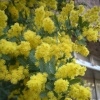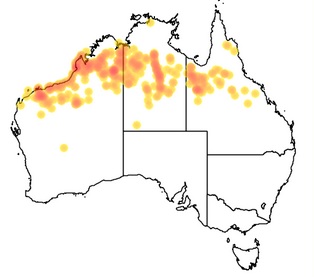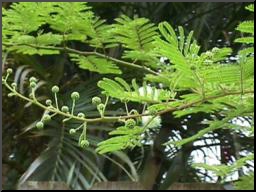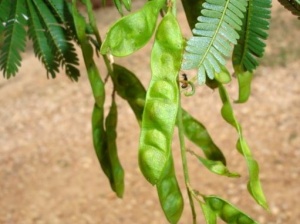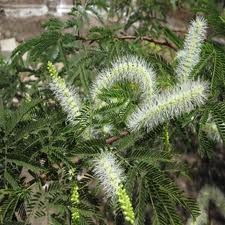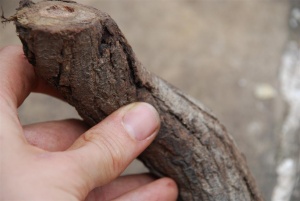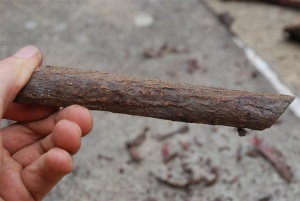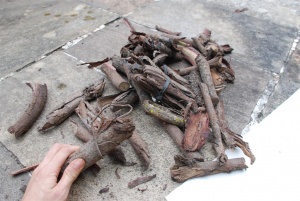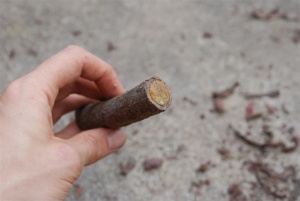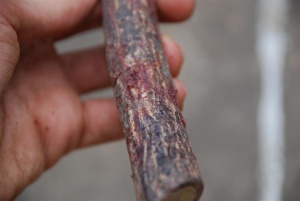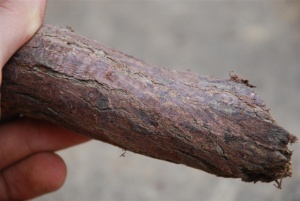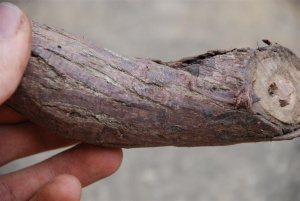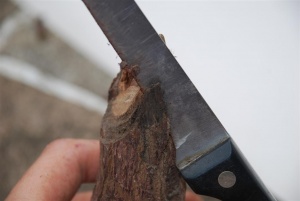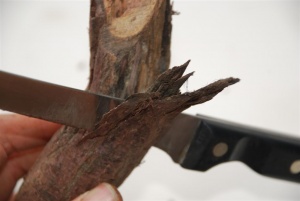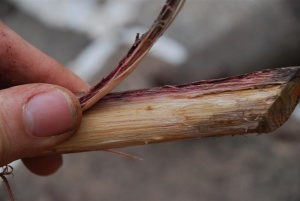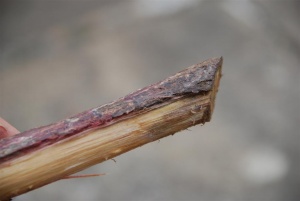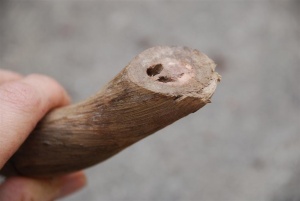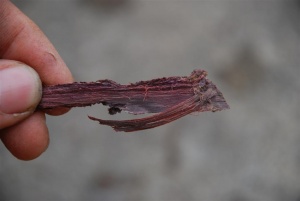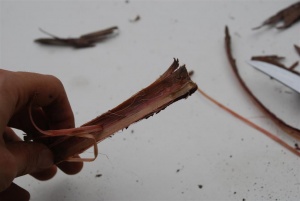Difference between revisions of "Category:DMT Containing Plants"
Cosmic Spore (Talk | contribs) (→WIKI -> Botanicals (link).) |
Cosmic Spore (Talk | contribs) (→WIKI -> Botanicals (link).) |
||
| Line 43: | Line 43: | ||
[https://www.dmt-nexus.me/forum/default.aspx?g=posts&m=369566#post369566 Mimosa hostilis and Mimosa spp. (pudica, ophthalmocentra etc) Workspace] | [https://www.dmt-nexus.me/forum/default.aspx?g=posts&m=369566#post369566 Mimosa hostilis and Mimosa spp. (pudica, ophthalmocentra etc) Workspace] | ||
| − | |||
| − | |||
[https://www.dmt-nexus.me/forum/default.aspx?g=posts&t=23472 Trying to improve Acacia information] | [https://www.dmt-nexus.me/forum/default.aspx?g=posts&t=23472 Trying to improve Acacia information] | ||
| + | |||
| + | [https://www.dmt-nexus.me/forum/default.aspx?g=posts&t=36371 Acacia photo gallery] | ||
[https://www.dmt-nexus.me/forum/default.aspx?g=posts&t=33648 Acacia Identification Thread] | [https://www.dmt-nexus.me/forum/default.aspx?g=posts&t=33648 Acacia Identification Thread] | ||
[https://www.dmt-nexus.me/forum/default.aspx?g=posts&t=38229 The TOP 8 ACACIAS to Grow WORLDWIDE] | [https://www.dmt-nexus.me/forum/default.aspx?g=posts&t=38229 The TOP 8 ACACIAS to Grow WORLDWIDE] | ||
| + | |||
| + | [https://www.dmt-nexus.me/users/cosmicspore/Acacia.zip Acacia.zip] | ||
[https://www.dmt-nexus.me/forum/default.aspx?g=posts&m=357670#post357670 Guide to Researching Psychoactive Plants: Resource List] | [https://www.dmt-nexus.me/forum/default.aspx?g=posts&m=357670#post357670 Guide to Researching Psychoactive Plants: Resource List] | ||
Revision as of 02:46, 13 May 2014
| Note: | This page is a work in progress -- its content throughout is not yet complete. |
Contents
- 1 WIKI -> Botanicals (link).
- 2 DMT Containing plants
- 3 General Plant Info
- 4 Geographic distribution
- 5 Identification
- 6 Alkaloid content
- 7 Other uses
- 8 Extraction
- 9 Cultivation
- 10 Suppliers
- 11 Links
- 12 References
- 13 General Plant Info
- 14 Identification
- 15 Alkaloid content
- 16 Extraction teks
- 17 Cultivation
- 18 Refinery for the Purpose of Extraction
- 19 References
- 20 Links
- 21 Sources
WIKI -> Botanicals (link).
Mimosa hostilis and Mimosa spp. (pudica, ophthalmocentra etc) Workspace
Trying to improve Acacia information
The TOP 8 ACACIAS to Grow WORLDWIDE
Guide to Researching Psychoactive Plants: Resource List
STS: Practical Resources for Plant ID and description
DMT Containing plants
The following is a list of plants known to contain tryptamines.
Acacia
| Acacia acuminata |
|
|---|---|
| Up to 1.8% alkaloids, mainly consisting of dimethyltryptamine in bark (Jeremy EGA conference, Australia 2009, used successfully in S.Australia since c.2008); up to 1.2% DMT phyllode (leaf) (DMT-Nexus); tryptamine in leaf (White et al 1951) |
| Acacia alpina |
|
|---|---|
| Active principles (mainly DMT) in leaf (M.Bock) |
| Acacia angustifolia |
|
|---|---|
| Psychoactive Tryptamines (Rätsch 2004) |
| Acacia angustissima |
|
|---|---|
| β-methyl-phenethylamine (Glasby 1991)NMT and DMT in leaf, 1.2-2.8 ppm (McSweeney et al. 2005) |
| Acacia auriculiformis |
|
|---|---|
| 5-MeO-DMT in stem bark (Lycaeum) |
| Acacia baileyana |
|
|---|---|
|
| Acacia berlandieri |
|
|---|---|
|
| Acacia catechu |
|
|---|---|
|
| Acacia caven |
|
|---|---|
|
[[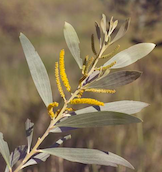 |center|100x100px]] |center|100x100px]] |
Acacia colei |
|---|---|
| DMT (Dr. Karl and abc.net.au 2005) 1%+ in bark (different net reports) |
</onlyinclude>
General Plant Info
Acacia colei is a perennial bush or tree native to Australia and southern Asia. A common name for it is Cole's Wattle. It grows to a height of up to 9 m. Acacia colei blooms from June through July and the flowers are bright yellow.[1]
Consists of 2 variants:
Geographic distribution
Identification
Phyllodes are 10-19 cm long and 20-55 mm wide, usually with three prominent longitudinal nerves. A dense covering of short hairs on the phyllodes gives the plant a characteristic silvery-blue appearance.
Alkaloid content
Claimed to contain 1.8% or more DMT in bark [2] [3], 0.2-0.6% in leaf. Needs further research.
Other uses
Its uses include environmental management, forage and wood. The seeds are good-tasting[4] and are potentially useful as food for humans. The results of tests in Nigeria for the feasibility of raising the tree as a drought-resistant food crop came out very positively.[5]
Extraction
Cultivation
Suppliers
Links
References
- ↑ Australian Biological Resources Study
- ↑ Dr. Karl Kruszelnicki ABC Radio
- ↑ Seldom/nen888 DMT Nexus
- ↑ ECHO Education Concerns for Hunger Organization
- ↑ World Wide Wattle
| Acacia complanata |
|
|---|---|
|
| Acacia constricta |
|
|---|---|
|
| Acacia confusa |
|
|---|---|
|
| Acacia cornigera |
|
|---|---|
|
| Acacia cultriformis |
|
|---|---|
|
| Acacia farnesiana |
|
|---|---|
|
| Acacia filiciana |
|
|---|---|
|
| Acacia floribunda |
|
|---|---|
|
| Acacia georginae |
|
|---|---|
|
| Acacia greggii |
|
|---|---|
|
| Acacia harpophylla |
|
|---|---|
|
| Acacia holoserica |
|
|---|---|
|
| Acacia horrida |
|
|---|---|
|
| Acacia implexa |
|
|---|---|
|
| Acacia karroo |
|
|---|---|
|
| Acacia kempeana |
|
|---|---|
|
| Acacia kettlewelliae |
|
|---|---|
|
| Acacia laeta |
|
|---|---|
|
| Acacia lingulata |
|
|---|---|
|
| Acacia longifolia |
|
|---|---|
|
| Acacia macradenia |
|
|---|---|
|
| Acacia maidenii |
|
|---|---|
|
| Acacia mangium |
|
|---|---|
|
| Acacia melanoxylon |
|
|---|---|
|
| Acacia mellifera |
|
|---|---|
|
| Acacia nilotica |
|
|---|---|
|
{{botanics_info|image:NoImage.png|Acacia obtusifolia|
- 0.4 to 0.5 % DMT/NMT in the dried bark (Csiro 1990)
- 0.15-0.6% DMT,NMT(2:1)plus trace betacarboline in bark, 0.06-0.2% leaves (Southern Cross University comissioned test 2001)
- 5-MeoDMT & bufotenine in some loctations (E., Entheogen Review 1995-6; Trout's Notes 2005-10) Is not fast growing in the wild and is under threat of serious overharvesting. Is NOT considered a weed as previously stated here, and will become rarer if wild seed populations exploited further.(Nen, original bioassay subject)
| Acacia oerfota |
|
|---|---|
|
| Acacia penninervis |
|
|---|---|
|
| Acacia phlebophylla |
|
|---|---|
|
| Acacia platensis |
|
|---|---|
|
| Acacia podalyriaefolia |
|
|---|---|
|
| Acacia polyacantha |
|
|---|---|
|
| Acacia pycantha |
|
|---|---|
|
| Acacia retinodes |
|
|---|---|
|
| Acacia roemeriana |
|
|---|---|
|
| Acacia rigidula |
|
|---|---|
|
| Acacia salicina |
|
|---|---|
|
| Acacia sassa |
|
|---|---|
|
| Acacia schaffneri |
|
|---|---|
|
| Acacia schottii |
|
|---|---|
|
| Acacia senegal |
|
|---|---|
|
| Acacia simplex |
|
|---|---|
|
| Acacia taxensis |
|
|---|---|
|
| Acacia tenuifolia |
|
|---|---|
|
| Acacia tortilis |
|
|---|---|
|
| Acacia sieberiana |
|
|---|---|
|
| Acacia verek |
|
|---|---|
|
| Acacia vestita |
|
|---|---|
|
Anadenanthera
| Anadenanthera colubrina |
|
|---|---|
|
| Anadenanthera macrocarpa |
|
|---|---|
|
| Anadenanthera peregrina |
|
|---|---|
| Tryptamines known to be present in A. peregrina [1] Bufotenine (seeds)Bufotenine N-oxide (seeds)N,N-Dimethyltryptamine N-oxide (seeds)N,N-Dimethyltryptamine (bark)(pods)(seeds)5-Methoxy-N-methyltryptamine (bark)O-Methylbufotenine (bark) (seeds)N-Methyltryptamine (bark) |
Common Reed
| Arundo donax |
|
|---|---|
| Entire Plant contains 5-MeO-DMT (Shulgin, TIHKAL)Flowers contain DMT, 5-MeO-DMT, and 5-MeO-NMT (Shulgin, TIHKAL)Roots contain DMT, 5-MeO-DMT, 5-MeO-NMT, Bufotenine, bufotenidine, dehydrobufotenidine (Shulgin, TIHKAL) |
| Desmanthus illinoensis |
|
|---|---|
| Root contains DMT - 0.200% (Ott)Root Bark contains DMT - 0.340% (Ott) |
| Phalaris arundinacea (Reed Canary Grass) |
|
|---|---|
| Leaves contain DMT, 5-MeO-DMT, and related compounds (Smith 1977) 0.0004-0.121% Total Alkaloids (Dried) Lycaeum (DMT, Life and the Universe) |
| Phalaris tuberosa |
|
|---|---|
| Leaves and seedlings contain DMT, 5-MeO-DMT, and related compounds (Smith 1977)DMT - 0.100% (erowid)5-MeO-DMT - 0.022% (erowid)5-OH-DMT - 0.005% (erowid) |
| Phragmites australis (Common Reed) |
|
|---|---|
| DMT in roots (Ott) |
Delosperma
| Delosperma acuminatum |
|
|---|---|
| DMT, 5-MEO-DMT (Trout's Notes) |
| Delosperma cooperi |
|
|---|---|
| DMT, 5-MEO-DMT (Trout's Notes) |
| Delosperma ecklonis |
|
|---|---|
| DMT (Trout's Notes) |
| Delosperma esterhuyseniae |
|
|---|---|
| DMT (Trout's Notes) |
| Delosperma hallii |
|
|---|---|
| 5-MEO-DMT (Trout's Notes) |
| Delosperma harazianum |
|
|---|---|
| DMT, 5-MEO-DMT (Trout's Notes) |
| Delosperma hirtum |
|
|---|---|
| DMT (Trout's Notes) |
| Delosperma lydenbergense |
|
|---|---|
| DMT, 5-MEO-DMT (Trout's Notes) |
| Delosperma nubigenum |
|
|---|---|
| 5-MEO-DMT (Trout's Notes) |
| Delosperma pageanum |
|
|---|---|
| DMT, 5-MEO-DMT (Trout's Notes) |
| Delosperma pergamentaceum |
|
|---|---|
| Traces of DMT (Trout's Notes) |
| Delosperma tradescantioides |
|
|---|---|
| DMT (Trout's Notes) |
Desmodium
| Desmodium caudatum |
|
|---|---|
|
| Desmodium gangeticum |
|
|---|---|
|
| Desmodium gyrans |
|
|---|---|
|
| Desmodium pulchellum |
|
|---|---|
|
| Desmodium racemosum |
|
|---|---|
|
| Desmodium triflorum |
|
|---|---|
|
| Lespedeza bicolor |
|
|---|---|
var. japonica
|
Petalostylis
| Petalostylis cassioides |
|
|---|---|
| 0.4-0.5% tryptamine, DMT, etc. in leaves and stems (Johns et al 1966) |
Mimosa
General Plant Info
Mimosa hostilis is the former scientific name for Mimosa tenuiflora, and the two names are synonymous [2][3]. The older name is still widely know due to its presence in the literature and as distributers of botanical products still use the older term. M. tenuiflora is an entheogen known as Jurema, Jurema Preta, Black Jurema, and Vinho de Jurema. Dried Mexican Mimosa Hostilis root bark has been recently shown to have a DMT content of about 1%. The stem bark has about 0.03% DMT.
To date no β-carbolines such as harmala alkaloids have been detected in Mimosa tenuiflora decoctions, however the isolation of a new compound called "Yuremamine" from Mimosa tenuiflora as reported in 2005 represents a new class of phyto-indoles [4]. This may explain the reported oral activity of DMT in Jurema without the addition of an MAOI. Imported MHRB typically requires the addition of an MAOI in the preparation of ayahuasca.
Identification
Alkaloid content
- Root Bark contains DMT - 0.31% to 0.57% (Schultes 1977)
- Inner root bark contains up to 2% active alkaloids (Extractions from DMT-Nexus and others)
- 3% of the total alkaloids (or 0.04% of rootbark) is NMT and 2-Methyl-1,2,3,4-Tetrahydro-Beta-Carboline (Analysis of jungle spice, Analysis of red/yellow/white spices
Extraction teks
For extracting DMT , any of the extraction teks described here will work.
Yuremamine is sensitive to heat and pH changes so only cold water (or alcoholic) soak will retrieve it.
Cultivation
Growing: Mimosas aren´t cold proof. For outdoor growing they deserve a sunny place with leachy middle nutrient soil. Throughout the vegetation are copiously watered, in winter the watering is tied down on to the minimum. They are breeding with the seeds, but can be breeded with the cutting also.
Refinery for the Purpose of Extraction
Mimosa Hostilis Root Bark can be acquired in different stages of preparation. Usually it is sold as whole, shredded or pre-powdered root-bark, but one may have access to the whole root—usually when harvested directly.
- The whole root must cleaned and stripped of its inner root-bark while discarding the rest of the root.
- The whole root-bark must generally be torn by hand, cut, or smashed with a blunt object prior to shredding.
- The shredded should be further broken down as much as possible by peeling/cutting/blending to increase surface area for alkaloids to be extracted.
- The pre-powdered can always be used "as-is".
Below details how to break it from whole root
The Root
| Note: | Only the Inner Root Bark is necessary for extraction, the core and outer parts are to be discarded! |
| Root preparation | ||||
|---|---|---|---|---|
|
Pictured below is its original after being harvested from the plant. Notice the middle core is quite distinct from the root-bark, the outer bark is much more brown: |
Cleaning the root
| Cleaning The Root | ||||
|---|---|---|---|---|
|
The first step in refinery is to brush the outside to remove the dirt. Then the outer bark must be lightly scraped with a good knife. It is preferable to remove at least some of the outermost layer to uncover the more blackish and purplish layer underneath: |
Peeling the Inner Root Bark
| Peeling the Inner Root Bark | |||||
|---|---|---|---|---|---|
|
Once the outermost part has been removed, peel off the Inner Root Bark to separate it from the core. This can easily be accomplished immediately by hand, though the use of a knife may be helpful. Here's the inner core which is to be discarded: |
Result of root preparation
| Result of root preparation | ||
|---|---|---|
|
The peeled inner root-bark now needs to dry. This may be accomplished by simply leaving it in the sun. Here's how it should look: |
Breaking the rootbark up
| Breaking the rootbark up | |
|---|---|
|
The pieces/strips of inner root-bark require further refinery to expose a larger surface area and increase the availability of the alkaloids for extraction. If storage is desired, then the whole pieces are preferable, as the alkaloids are less exposed and thus better protected. First strip the pieces further into thinner layers with the hands, then cut it up with good scissors into smaller squares, then break it down in small amounts and short/medium bursts with a blender or coffee grinder (to prevent breaking of blender/grinder) |
References
- ↑ Southon et al. 1994. Phytochemical Dictionary of the Leguminosae. CRC Press. p. 71.
- ↑ USDA, ARS, National Genetic Resources Program. Germplasm Resources Information Network - (GRIN) [Online Database]. National Germplasm Resources Laboratory, Beltsville, Maryland. URL: http://www.ars-grin.gov/cgi-bin/npgs/html/taxon.pl?24430
- ↑ Lewis, G.P. (1987) Royal Botanic Gardens, Kew 369 pp Legumes of Bahia.
- ↑ Vepsäläinen, Jouko J.; Auriola, Seppo; Tukiainen, Mikko; Ropponen, Nina & Callaway, J.C. (2005). "Isolation and characterization of yuremamine, a new phytoindole". Planta Medica, 71: 1053-1057. URL: http://www.ncbi.nlm.nih.gov/pubmed/16320208
Links
| Mimosa ophthalmocentra (Red Jurema
) |
|
|---|---|
|
1,6% DMT in the inner rootbark [1] |
| Mimosa scabrella |
|
|---|---|
|
| Mimosa verrucosa |
|
|---|---|
|
| Mucuna pruriens |
|
|---|---|
|
| Petalostylis labicheoides |
|
|---|---|
var. casseoides
|
| Diplopterys cabrerana (Chaliponga
) |
|
|---|---|
|
| Horsfieldia superba |
|
|---|---|
|
| Iryanthera ulei |
|
|---|---|
|
| Osteophloem platyspermum |
|
|---|---|
|
Virola
| Virola calophylla |
|
|---|---|
|
| Virola carinata |
|
|---|---|
|
| Virola divergens |
|
|---|---|
|
| Virola elongata |
|
|---|---|
|
| Virola melinonii |
|
|---|---|
|
| Virola multinervia |
|
|---|---|
|
| Virola pavonis |
|
|---|---|
|
| Virola peruviana |
|
|---|---|
|
| Virola rufuta |
|
|---|---|
|
| Virola sebifera |
|
|---|---|
|
| Virola theiodora |
|
|---|---|
|
| Virola venosa |
|
|---|---|
|
| Psychotria carthaginensis |
|
|---|---|
|
| Psychotria viridis (Chacruna
) |
|
|---|---|
|
Sources
- ↑ L. M. Batista; R. N. Almeida; E. V. L. da-Cunha; M. S. da-Silva; J. M. Barbosa-Filho. Isolation and Identification of Putative Hallucinogenic Constituents from the Roots of Mimosa ophthalmocentra. In: Pharmaceutical Biology, Volume 37, Issue 1 January 1999
Pages in category "DMT Containing Plants"
The following 15 pages are in this category, out of 15 total.
A |
A cont. |
A cont.B |





